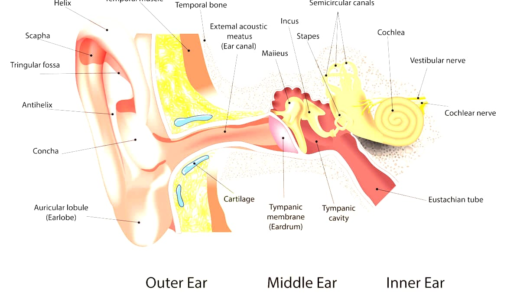A hygrometer is essential for measuring indoor humidity, helping to maintain comfort and health. High humidity can lead to mold growth and health issues, while low humidity can cause skin and respiratory problems. Different types of hygrometers are available, including mechanical, electronic, and smart models. Monitoring humidity levels regularly can prevent discomfort and damage. Signs indicating the need for a hygrometer include persistent allergies, mold, and visible wood damage. Optimal humidity levels contribute to better health and home comfort.
What’s a Hygrometer?
A hygrometer is an instrument used to measure the humidity in the air. It provides important data about moisture levels, which can significantly affect our comfort and health at home. Understanding how much moisture is in the air can help prevent various issues related to both high and low humidity.
How Do Hygrometers Work?
Hygrometers operate on different principles depending on their type. Most common types include:
- Mechanical Hygrometers: These use materials that change shape or size with humidity levels. For example, human hair can expand or contract based on moisture.
- Dew Point Hygrometers: These measure the temperature at which dew forms, indicating humidity.
- Electronic Hygrometers: They use sensors to detect humidity levels and provide digital readings.
Each type has its own method but ultimately serves the same purpose: helping us understand the moisture in our environment.
Why Humidity Matters at Home?
Humidity plays a crucial role in maintaining a comfortable living environment. The ideal indoor humidity level is typically between 30% and 50%. When humidity is within this range, it helps in:
- Preserving wooden furniture and flooring.
- Reducing the chances of mold growth.
- Enhancing overall comfort by preventing dry skin and respiratory issues.
Monitoring humidity levels with a hygrometer can help you maintain these optimal conditions, ensuring a healthier and more pleasant home.
What Problems Come from High Humidity?
High humidity levels can lead to several problems, including:
- Mold Growth: Excess moisture creates an environment conducive to mold, which can damage property and affect health.
- Allergies: Mold and dust mites thrive in high humidity, triggering allergies and asthma symptoms.
- Structural Damage: High moisture can warp wood, damage walls, and lead to costly repairs.
By using a hygrometer, homeowners can identify and mitigate high humidity issues before they escalate.
What Problems Come from Low Humidity?
Low humidity can lead to a range of issues that affect both health and comfort. When humidity levels drop below 30%, several problems may arise:
- Dry Skin: Low humidity can cause skin to become dry and flaky. This discomfort can lead to irritation and even cracking.
- Respiratory Issues: Dry air can irritate the respiratory tract, leading to problems such as sore throat, sinus congestion, and increased susceptibility to colds.
- Static Electricity: Low humidity often leads to increased static electricity, which can be annoying and even damaging to electronic devices.
- Wood Damage: Furniture and flooring made from wood can crack and warp when exposed to dry air for extended periods.
Maintaining optimal humidity levels is essential for comfort and well-being. Using a hygrometer can help you monitor these levels and take action when necessary.
Thermostat vs Hygrometer: What’s the Difference?
A thermostat and a hygrometer serve different functions in a home. While both are essential for maintaining a comfortable living environment, their roles are distinct:
- Thermostat: This device regulates temperature. It controls heating and cooling systems to maintain a desired temperature set by the user.
- Hygrometer: This instrument measures humidity levels in the air. It provides data about moisture levels, which is crucial for preventing problems related to both high and low humidity.
In essence, a thermostat manages heat, while a hygrometer monitors moisture. Understanding this difference helps homeowners make informed decisions about their indoor climate control.
Can a Thermostat Manage Humidity?
While a thermostat primarily focuses on temperature control, some advanced models can indirectly influence humidity levels. However, they are not designed to measure or manage humidity directly. Here’s what you should know:
- Smart Thermostats: Some smart thermostats can work in conjunction with humidifiers or dehumidifiers, allowing for better overall climate control.
- Limitations: Standard thermostats do not provide humidity readings or adjust humidity levels. They are not a substitute for a hygrometer.
For optimal humidity management, a hygrometer is essential. It provides precise measurements and can alert you to when adjustments are needed, ensuring a comfortable and healthy home environment.
When Should You Get a Hygrometer?
Getting a hygrometer is a smart move when you notice certain signs or conditions in your home. Here are some scenarios when you should consider purchasing one:
- Persistent Allergies: If you or your family members are experiencing constant allergies, it might be due to high humidity.
- Visible Mold Growth: Spotting mold in corners, on walls, or around windows indicates excessive moisture.
- Wood Damage: Warping or cracking in wooden furniture and flooring may signal low humidity.
- Dry Skin and Respiratory Issues: Frequent dryness of skin or respiratory discomfort can be a result of low humidity levels.
- Seasonal Changes: During seasons with extreme weather, having a hygrometer helps monitor fluctuations in humidity.
By assessing these signs, you can determine the right time to invest in a hygrometer to maintain a comfortable and healthy home environment.
Types of Hygrometers Available
There are several types of hygrometers available, each with unique features:
- Mechanical Hygrometers: These are simple devices that use materials like human hair that expand or contract with humidity changes.
- Dew Point Hygrometers: These measure the temperature at which moisture condenses, giving an accurate humidity reading.
- Electronic Hygrometers: These use sensors for precise measurements and often provide digital displays for ease of reading.
- Psychrometers: These consist of two thermometers (wet and dry) and calculate humidity based on the difference in readings.
- Smart Hygrometers: These can connect to your smartphone or smart home system, offering real-time monitoring and alerts.
Each type serves different needs, so choose one that fits your home environment and monitoring preferences.
Using a Hygrometer for Comfort
To ensure your home is comfortable, using a hygrometer effectively is key. Here are some tips:
- Regular Monitoring: Check humidity levels regularly, ideally once a week, to ensure they stay within the optimal range of 30% to 50%.
- Placement: Place your hygrometer in areas where humidity issues are most likely, like basements, bathrooms, or near windows.
- Adjustments: Use the readings to adjust your humidifier or dehumidifier accordingly. For high humidity, increase ventilation or use dehumidifiers; for low humidity, consider using a humidifier.
- Seasonal Adjustments: Be proactive during seasonal transitions, as humidity levels can change significantly during summer and winter.
By following these tips, you can use a hygrometer to enhance your indoor comfort and protect your home from humidity-related issues.
Signs You Need a Hygrometer
Recognizing the signs that indicate the need for a hygrometer can save you from potential discomfort and damage. Here are key indicators:
- Frequent Illness: If family members often fall ill or experience respiratory problems, humidity could be a factor.
- Unpleasant Odors: Musty smells often signal mold or mildew due to high humidity.
- Difficulty Breathing: If you notice increased difficulty in breathing, it could indicate too much moisture in the air.
- Condensation on Windows: Excessive condensation indicates high humidity levels, which can lead to mold growth.
Being aware of these signs can prompt you to take action and maintain a healthier living environment.
How Humidity Affects Health
Humidity levels have a direct impact on health and overall comfort. Here’s how:
- High Humidity: Can lead to mold growth, which is a known allergen and can cause respiratory issues, asthma, and other health problems.
- Low Humidity: Results in dry skin, irritated eyes, and respiratory discomfort, increasing susceptibility to infections.
- Optimal Levels: Maintaining humidity between 30% and 50% supports overall health, preventing both dry air discomfort and mold proliferation.
Understanding how humidity affects your health emphasizes the importance of monitoring it regularly, ensuring a comfortable and safe home environment.





Comments are closed.